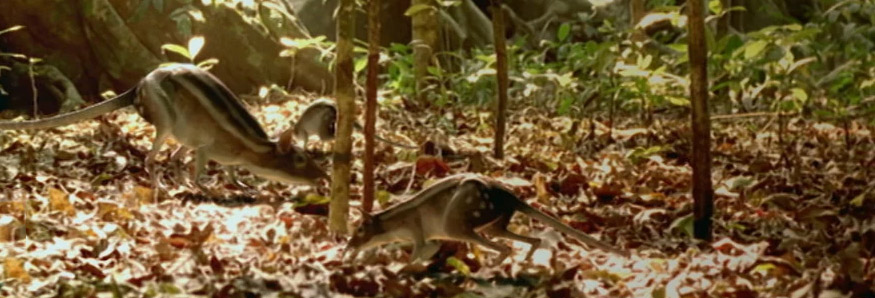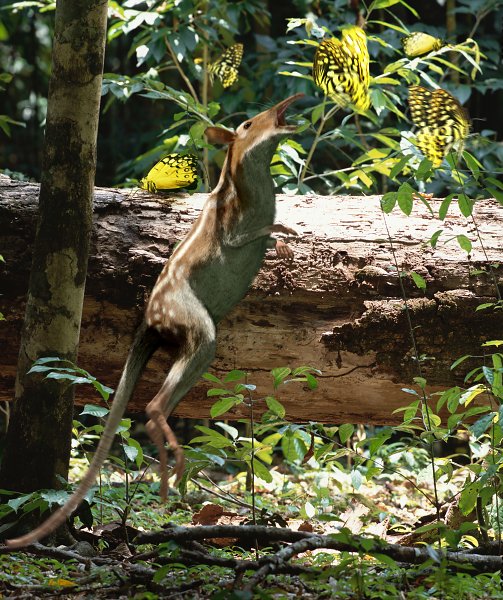Lepti
Wander through any forest in the early hours of the day and you're sure to see them. Leptis are a common sight throughout warm, lush forests. They've moved into cities as well, and humans took to them with enthusiasm. Their habit of eating mice, lizards, and bugs makes them popular for vermin control and they're frequently kept as pets. As pets, they're bred for different coat patterns, with the preferred being a mixture of spots on the rear and stripes along the back.
Wild leptis, especially those who live around urban areas in Maloa, are often rounded up for use in blood racing. This is controversial due to the many lepti lovers who keep them as pets, but is still legal throughout Maloa.
Basic Information
Anatomy
They resemble a rodent, but are fully bipedal and walk on their hind legs. Their primary method of locomotion is to move in small hops, but are capable of hopping quite quickly with their long tail as balance.
They have short forelimbs held close to the body, which they use to support themselves when bending over to forage for food on the forest floor.
One of their notable traits, and considered the best part by lepti enthusiasts, is their long, whiskered nose. The nose reminds some of a miniature mastodon, and twitches when they sniff the air.
They have short forelimbs held close to the body, which they use to support themselves when bending over to forage for food on the forest floor.
One of their notable traits, and considered the best part by lepti enthusiasts, is their long, whiskered nose. The nose reminds some of a miniature mastodon, and twitches when they sniff the air.
Dietary Needs and Habits
As omnivores, they can survive on just about anything. They forage for grass, roots, nuts, and berries as their primary source of food, and hunt when given the opportunity. They'll hunt about anything smaller than themselves, generally small lizards and rodents or insects.
Scientific Name
Leptictidium nasutum
Lifespan
4-5 years
Average Height
75 cm long
Average Weight
< 5 lbs
Body Tint, Colouring and Marking
Reddish brown fur with white spots or streaks, a white belly



